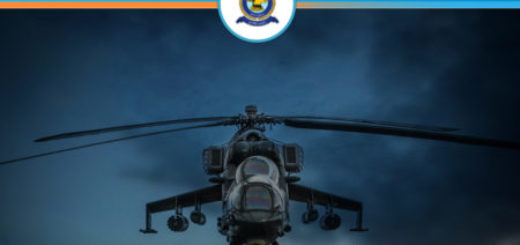France plans to order 60 additional Dassault Rafale fighters by 2035
France plans to expand its Rafale fighter fleet by more than 60 aircraft under its 2026 finance bill, potentially raising the total number of combat-ready jets for the French Air and Space Force and French Navy to 286.
According to the draft budget presented to parliament, the program target “may be adjusted to ensure consistency with the fleet format provided for in the Military Programming Law (LPM).” The increase, confirmed in supporting budget documents, would mark a significant expansion of France’s combat aviation capability and reinforce the “all-Rafale” goal by 2035.
Until now, the 2019-2025 and 2024-2030 LPMs envisioned a combined Rafale fleet of 225 aircraft by the mid-2030s, including 185 for the Air and Space Force and 40 for the French Navy. The 2026 proposal raises that figure by 60 for operational service.
Toward an “all-Rafale” force by 2035
France’s Air and Space Force currently operates around 100 Rafale jets, 67 Mirage 2000D out of which 55 will be modernized under the RMV program, and just under 30 Mirage 2000-5F, some of which will be transferred to Ukraine.
Under the current LPM, the French Air and Space Force is set to field 137 Rafales and 48 Mirage 2000D by 2030, transitioning to a full Rafale fleet of 185 aircraft by 2035. The Navy, meanwhile, plans to operate 41 Rafale M jets by 2030 and 40 by 2035.
The new target of 286 aircraft would extend the Rafale’s role as France’s primary multirole fighter well into the 2040s, bridging the gap to the Franco-German-Spanish Future Combat Air System (FCAS). It would also ensure that the French Air and Space Force maintains sufficient numbers to cover operational commitments and pilot training, areas that have been strained in recent years due to export deliveries.
Export successes reshape domestic planning
France’s fleet planning has been repeatedly adjusted to accommodate Rafale export deals with Greece, Croatia, and others. Between 2021 and 2022, the French Air and Space Force transferred 24 Rafale F3R fighters to Greece and Croatia from its own inventory to accelerate deliveries, temporarily reducing the number of aircraft available for training and operations.
At the time, Chief of the Defense Staff General Thierry Burkhard acknowledged that the Air Force would end up with 117 Rafales by 2025, instead of the 129 initially planned, until replacement aircraft were delivered. Deputy Chief of Staff Frédéric Parisot later warned that this reduction would primarily affect pilot training hours but described the situation as “acceptable” if deliveries remained on schedule.
A program spanning F4 and F5 standards
The Rafale jets to be ordered would be delivered across the F4 and F5 standards, reflecting Dassault Aviation’s ongoing modernization roadmap.
According to the 2026 finance bill, the year’s main commitments include the order of two Rafale fighters to replace aircraft lost in an August 2024 crash, continued upgrades to simulators, and investments in configuration management and airworthiness.
The F4 configuration introduced enhanced connectivity, networked combat capabilities, and improved sensors. In 2026, funding will support the integration of new Suppression of Enemy Air Defenses (SEAD) capabilities, expanded connectivity work, and technical investments at DGA test centers.
The F5 standard will formally enter its development phase, with entry into service expected around 2030. Designed to strengthen operational effectiveness, it will encompass advanced air-combat, networked operations, and nuclear deterrence missions. The 2026 budget also provides for the continued development of the UCAV program, derived from Dassault’s nEUROn demonstrator, which will act as a “loyal wingman” to the crewed fighter jet.
© Dassault Aviation – A. PecchiTogether, the Rafale F5 and UCAV are expected to form the cornerstone of France’s future manned-unmanned combat system and operate with the ASN4G, a next-generation hypersonic, nuclear-capable ramjet missile set to become the air-launched component of France’s deterrent by 2035.
Budget documents also confirm continued infrastructure investments across Saint-Dizier, Mont-de-Marsan, and Orange for the Air and Space Force, as well as Landivisiau for the French Navy, including facilities for a new fighter squadron.
RELATED
France to boost Rafale orders and reactivate historical nuclear deterrence base
Industrial and political implications
The potential order extension is expected to secure production continuity through the early 2040s, supporting thousands of jobs across France’s defense-industrial base. Dassault Aviation leads the Rafale program, with Safran supplying engines, Thales responsible for radar and optronics, and MBDA providing weapons and countermeasures.
The proposal will now go before the French Parliament, where lawmakers are expected to debate whether to approve funding for 60 additional fighters at a time when most other government ministries face spending cuts.
RELATED
France to order four Airbus A400Ms amid shift toward multirole operations
The 2026 finance bill signals France’s intent to rebuild and expand its fighter strength after years of balancing domestic requirements with export success, ensuring that by the mid-2030s, both the French Air and Space Force and the Navy will have enough aircraft to sustain operations, training, and future modernization. The post France plans to order 60 additional Dassault Rafale fighters by 2035 appeared first on AeroTime.
France plans to expand its Rafale fighter fleet by more than 60 aircraft under its 2026 finance bill,…
The post France plans to order 60 additional Dassault Rafale fighters by 2035 appeared first on AeroTime.





